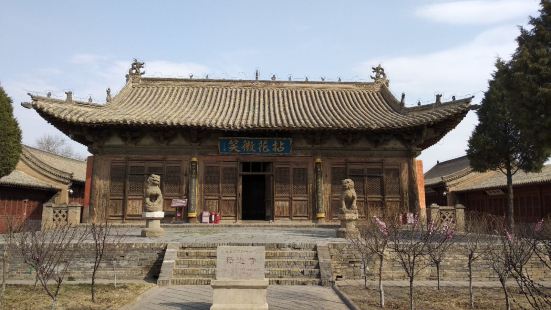
5/5
喜欢古建筑一定要去,藻井有代表性。 都护在燕然
都护在燕然1
The ancient city of Weizhou is located on the platform on the south bank of the Huliu River. At present, the south and east city walls of the ancient city of Weizhou have been completely demolished. The remaining parts that are better preserved are the northern section of the northern city wall and the western city wall, which are about 1,600 meters long. The east and west gates have been destroyed, and only the south gate remains. Wanshan Tower and Wenchang Pavilion in the city were restored and rebuilt in 1997. The east, west and south sides of the moat basically exist, and the stone bridge outside the three gates still exists. According to the records of "Weizhou Chronicle", the ancient city of Weizhou has thirteen steps in seven miles, the city wall is three feet and five feet high, there are three gate towers, four corner towers, twenty-four enemy towers, and more than 1,100 crenels. The east gate is Anding Gate, the building is Jingyang Building, the south gate is Jingxian Gate, the building is Wanshan Building, the west gate is Qingyuan Gate, and the building is Guangyun Building. There are tall and majestic urns outside the three gates. It is connected to the inner city by a suspension bridge across the moat. Outside the city is a moat that is more than 30 feet deep and 70 feet wide. The city of Weizhou is irregular in shape, wide in the south, narrow in the north, and curved and uneven on the east and west sides. Only the east, west and south gates were built in the city, and there was no north gate, but the Jade Emperor Pavilion was built on the northern city wall. In the city, the four main streets of east, west, north and south are the main lines, forming an architectural pattern with Wenchang Pavilion (Drum Tower) and South Gate (Wanshan Tower) symmetrical, and North and South Streets as the central axis. Due to historical reasons, the ancient city of Weizhou has suffered certain damage, but the style of the ancient city has basically not changed. In addition, the ancient city has many offices, temples, pavilions, and residential buildings, and there are still the legacy of the ancient city of Ming and Qing Dynasties. In the history of Weizhou, the culture of the Han nationality was the mainstream, but in terms of the shape of the ancient city, it was against the traditional "ritual system" of the Han nationality. . Sakyamuni sits in the north and faces the south, covering an area of 4,950 square meters. The building of the temple is magnificent and magnificent. Its main buildings, the Daxiong Hall, the apse and the side hall, have survived the wind and rain and are basically well preserved. It is one of the ancient temples in Weizhou and has high historical, artistic and scientific value. Recommended sights: Daxiong Hall is the only Yuan Dynasty building in Yuxian County. There are well-preserved caisson wells, inscriptions and screen walls in the temple. As a famous temple of Wei, Sakyamuni has a high reputation, so it has become a gathering place for eminent monks and literati. During holidays in the scenic spot, you can enjoy traditional shadow play performances in Lujiazhuang, Yu County.